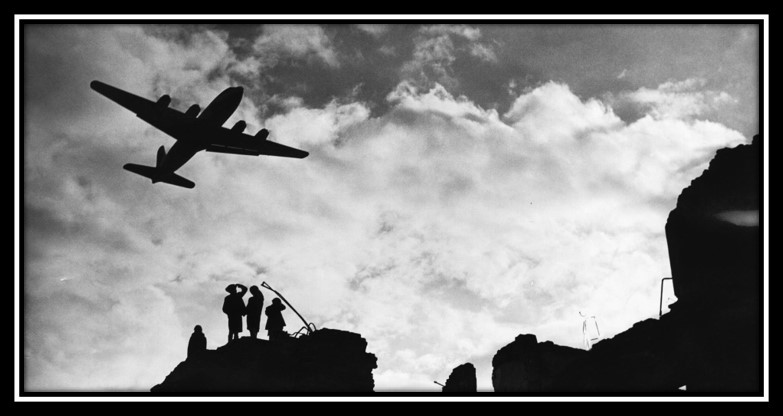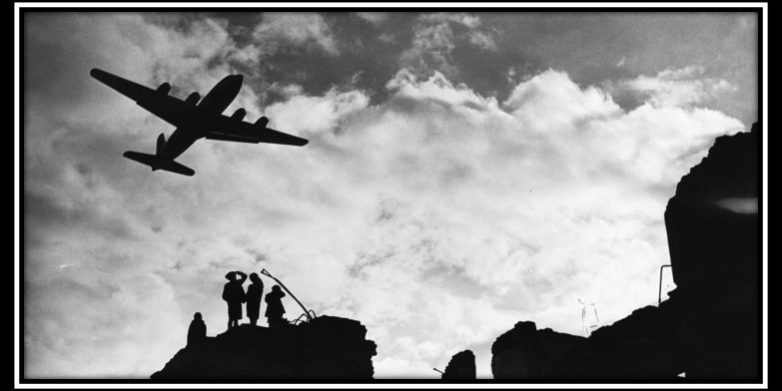The Berlin Airlift
Author: Barry Fetzer
Actions by the Soviet Union today in 1948 became the impetus for one of the largest, aviation-centric logistical efforts ever undertaken: the Berlin Airlift. Only two days after the Soviets closed all surface access to west Berlin, in what turned out to be a vain attempt to gain concessions from the allies on the future of post-WWII Germany, the Berlin Airlift began.
Could such a massive operation be started so rapidly today, given our bigger and more complex government bureaucracy, our divided political wills, and our elevated aversion to risk? Would we so forgiving and be so willing today to help a people who only three years in the past had been a bitter enemy? While hopefully we’ll never know for certain whether a 20th Century Berlin-type airlift could begin so quickly and end so successfully in the 21st Century, pondering the question is an interesting exercise in learning from the past so we can prepare for the future.
 Berlin Airlift aircraft flying over bombed buildings in Berlin, 1948. HULTON-DEUTSCH COLLECTION/CORBIS/GETTY IMAGES
Berlin Airlift aircraft flying over bombed buildings in Berlin, 1948. HULTON-DEUTSCH COLLECTION/CORBIS/GETTY IMAGES
From History.com: “One of the most dramatic standoffs in the history of the Cold War began on June 24, 1948 as the Soviet Union blocked all road and rail traffic to and from West Berlin. The blockade turned out to be a terrible diplomatic move by the Soviets, while the United States emerged from the confrontation with renewed purpose and confidence.
Following World War II, Germany was divided into occupation zones. The United States, Great Britain, the Soviet Union, and, eventually, France, were given specific zones to occupy in which they were to accept the surrender of Nazi forces and restore order. The Soviet Union occupied most of eastern Germany, while the other Allied nations occupied western Germany. The German capital of Berlin, located entirely within the Soviet-occupied zone, was similarly divided into four zones of occupation. The occupation zones of Germany and Berlin were agreed to at the Yalta Conference in February 1945 and formalized at Potsdam later that year. Almost immediately, differences between the United States and the Soviet Union surfaced. The Soviets sought huge reparations from Germany in the form of money, industrial equipment, and resources. The Russians also made it clear that they desired a neutral and disarmed Germany.
The United States saw things in quite a different way. American officials believed that the economic recovery of Western Europe was dependent on a strong, reunified Germany. They also felt that only a rearmed Germany could stand as a bulwark against Soviet expansion into Western Europe. In May 1946, the Americans stopped reparations shipments from their zone to the Soviets. In December, the British and Americans combined their zones; the French joined some months later. The Soviets viewed these actions as a threat and issued more demands for a say in the economic future of Germany. On June 22, 1948, negotiations between the Soviets, Americans, and British broke down. On June 24, Soviet forces blocked the roads and railroad lines into West Berlin.
American officials were furious and some in the administration of President Harry S. Truman argued that the time for diplomacy with the Soviets was over. For a few tense days, the world waited to see whether the United States and Soviet Union would come to blows. In West Berlin, panic began to set in as its population worried about shortages of food, water, and medical aid. The United States response came just two days after the Soviets began their blockade. A massive airlift of supplies into West Berlin was undertaken in what was to become one of the greatest logistical efforts in history.
Beginning June 26, 1948, two days after the blockade was announced, U.S. and British planes carried out the largest air relief operation in history, transporting some 2.3 million tons of supplies into West Berlin on more than 270,000 flights over 11 months. Nearly 700 aircraft were used during the Berlin Airlift, more than 100 of which belonged to civilian operators.
For the Soviets, the escapade quickly became a diplomatic embarrassment. Russia looked like an international bully that was trying to starve men, women, and children into submission. And the successful American airlift merely served to accentuate the technological superiority of the United States over the Soviet Union. The Berlin Blockade, and the Allied response in the form of the Berlin Airlift, represented the first major conflict of the Cold War.
On May 12, 1949, the Soviets officially ended the blockade. While Stalin had hoped the Berlin Blockade would force the Allies to abandon their efforts to create a West German state, the success of the Berlin Airlift confirmed such hopes were in vain. When the Soviets lifted the blockade, the crisis in Berlin had hardened the East/West division of Germany and all of Europe, ushering in the Cold War in earnest.”
Onward and upward!







